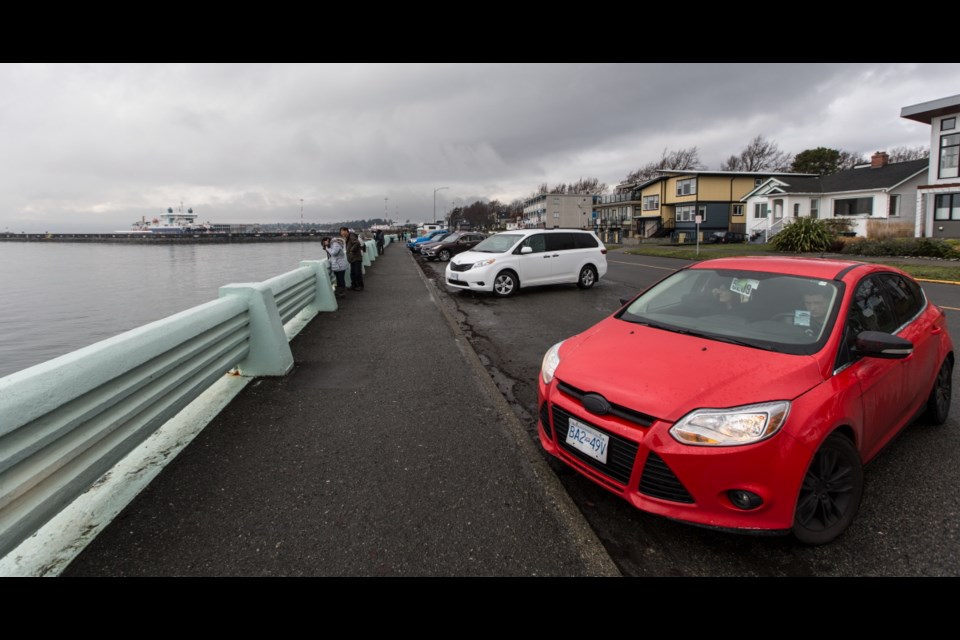Victoria鈥檚 city council should have just said no to a plan to remove more than 60 parking spots along Dallas Road to make way for a bicycle path. The poorly thought-out proposal is part of plans for an upgraded Clover Point sewage pumping station. It calls for construction of paths to accommodate cyclists and pedestrians along the sewage-pipeline route from Ogden Point to Clover Point. That would require removing 50 oceanfront parking spaces along Dallas Road and another 13 spaces on the other side of the road.
It鈥檚 a terrible idea. There is no need for separate bike lanes along that part of Dallas Road, which is already a wide, safe space for cyclists. Traffic is generally slow, and bicycles and cars can share the road.
The parking spaces, on the other hand, are definitely needed.
The proposal would remove the 120 angled parking spaces along the seawall east of Ogden Point, replacing them with 70 parallel parking spaces for a loss of 50 spaces.
The loss of spaces is significant; many people visit the waterfront there and need somewhere to park.
And the current angled parking offers people a place to take a break and look at the ocean and Olympic mountains. They can eat lunch, grab a coffee or just take in the view, windows down to smell the salt air and hear the cries of the gulls.
For some people with physical limitations, the parking spaces provide a rare chance to see the ocean and the mountains as they once did.
City councillors should see the problem. (As they should question why the sewage-treatment project is now doing park and transportation planning.)
The cycling community should be the first to reject this plan, recognizing that it risks a public backlash that could affect future investments in cycling infrastructure.
The community doesn鈥檛 need a bicycle-lane system that duplicates the road network. There are places where bike lanes are important, because roads are narrow and congested; there are places, such as Dallas Road, where drivers and cyclists can share the road without difficulty. The goal should be to ensure people aren鈥檛 deterred from cycling by road hazards.
If planners and council choose to place bike lanes where they aren鈥檛 needed, at the expense of the interests of others, opposition will intensify.
There is already concern that council is not reviewing the costs and benefits of bike lanes with sufficient rigour. Two years ago, the city announced plans for bike lanes on eight routes, at a cost of $7.75 million. The current estimate is $14.5 million, and councillors did not seem much concerned about the overruns.
A network of bike lanes that makes cycling a safe, secure transportation option benefits everyone, from the people who choose a healthy, non-polluting way to get around to drivers who enjoy less congested roads.
But creating bike paths where they aren鈥檛 needed, at the expense of others, will reduce support for that network.
And that is exactly what鈥檚 planned for Dallas Road.



